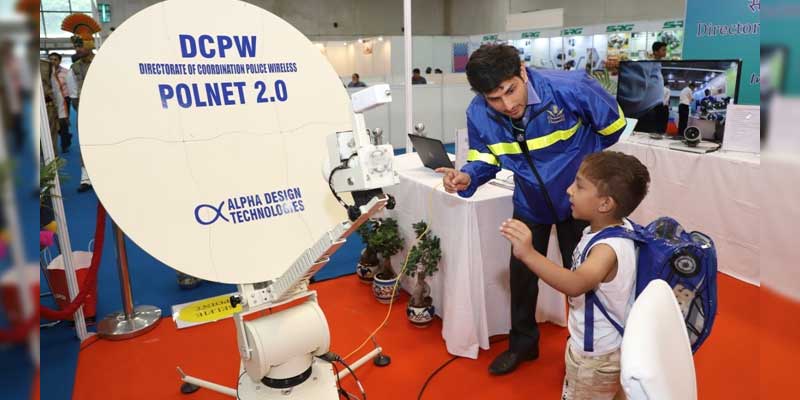- India
- Jan 21
Explainer / Significance of POLNET 2.0
Police communication services are expected to be bolstered as a revamped and upgraded POLNET 2.0 was commissioned by Union Minister of State for Home Nityanand Rai at a national conference in New Delhi.
The new platform is armed with a robust multimedia facility and is a captive satellite-based network that provides video, audio and data connectivity across the country, especially in times of disasters when regular communication either gets jammed or crashes.
The Directorate of Coordination Police Wireless (DCPW) that operates POLNET, or the police network services in the country, has brought out an enhanced communication platform for police and security forces to communicate better during law and order problems and disasters, including linkup from remote border and coastal areas.
What are the features of POLNET 2.0?
The DCPW has been operating POLNET since 2006. The new platform is named POLNET 2.0 and for the first time it will provide video-conferencing facility to four entities sitting at different locations in the country with internet-enabled multimedia services.
From its control room in New Delhi, it can host 40 people talking at one point of time.
POLNET 2.0 will also have a phone calling facility for personnel of police and paramilitary forces deployed in remote areas to talk to their families.
The communication facility will not only bring all disaster response and security forces like the National Disaster Response Force, state and central forces, fire units and hospitals during disasters on one platform but also enable them to share photos, videos and other logistical data on a real-time basis.
The new platform will work on the robust C-band satellite network as compared to POLNET that worked in the Ku-band.
It will also connect about 260 remote police stations with the CCTNS (crime and criminal tracking network and systems).
What is the purpose of DCPW?
The DCPW was set up in 1946 as Inspectorate of Wireless and was later accorded the status of Directorate of Coordination (Police Wireless), a subordinate organisation, under the ministry of home affairs in 1950.
It is entrusted with the responsibility of coordinating for developing and establishing the police telecommunication network in the country and also to advise the home ministry on all police telecommunication matters.
The DCPW operates a round-the-clock Inter State Police Wireless (ISPW) Network through its 31 stations in all state / UT capitals for delivering urgent messages pertaining to law and order.
It has an extensive network of Very Small Aperture Terminals (VSATs) spread over the entire country and extending connectivity to all district / state headquarters and National Capital Delhi through its satellite-based network namely Police Network (POLNET).
It acts as a nodal agency for coordinating various police communication services of states / UTs / CAPFs. Radio communication security matters for all states / UTs police and CAPFs are also coordinated by the DCPW.
The directorate also runs a Central Police Radio Training Institute, which was initially started as a small training school for the in-service training requirements of DCPW personnel. This was later upgraded into a full-fledged National Level Police Wireless Training Institute in 1971 to cater the needs of states / CPOs and other security organisations to improve the efficiency of their technical and operational manpower.
Major milestones of DCPW
Since the first Inter-State Police Radio Control Station was established in New Delhi in 1949, the DCPW has many landmarks to its credit.
First use of Closed Circuit Television (CCTV) for crowd control was done in 1974, during the Kumbh Mela in Haridwar.
In the same year, the first use of ground-to-air communications for police work with BSF aircraft and first fax transmission for police use in Tamil Nadu was also done by DCPW.
In 1983, the Mobile Control Room was first used by police in Delhi and first 800MHz security communication system was established by police for the Non-Aligned Movement Summit.
Work on implementation of pilot project relating to the National Police Telecommunication Network Plan was initiated by the DCPW in 1990.
In 2003, a DCPW team visited Afghanistan for restoring their communication under the directions of the ministry of external affairs.
During the 2004 Asian tsunami, telecommunication links were restored in the ravaged Andaman & Nicobar Islands by an expert team of DCPW using POLNET VSATs.
During the SAARC Conference 2008 in Islamabad, the DCPW presented concept of networking SAARC police heads for exchange of information.
Manorama Yearbook app is now available on Google Play Store and iOS App Store

